I always try to be short with my reviews, but when I have in my hand a nice quad like this Walkera Rodeo 150 I always go with the flow… As unusual, my goal is to discover (or at least try) all the strangeness and weaknesses of this drone.
Walkera, over time became a favorite drone brand among RC enthusiasts. Lately, their product range seems to be focused on FPV racing quadcopters. I already reviewed two of them and I’m very curious if this Rodeo 150 has the same nice build quality and excellent flight performance.
The Walkera Rodeo 150 quadcopter was announced in two variants, BNF (Bind-N-Fly) and RTF, in a bundle with the Devo 7 transmitter. Both versions are available in black and white.
Walkera Rodeo 150 quadcopter review
Before I get into details, I need to thank LighTake for offering this drone in order to make an honest review. Our first contact started with the left foot. LT “borrowed” and published my Kaideng K80 review on their website without my consent. Immediately as I noticed them, they quickly understood that it was not a fair thing to do and they took it out.
As I already own a Devo 7 remote controller I requested the BNF (Bind & Fly) package of the Walkera 150 Rodeo, this way it will reduce the shipping costs and eventually custom fees.
Walkera Rodeo 150 drone highlights
- Suitable for both indoor and outdoor flights;
- Modular design;
- Brushless motors;
- External receiver port;
- Versatile F3 flight controller;
- Multiple flight modes;
- Onboard buzzer;
- Powerful headlight;
- 600TVL camera with angle adjustment;
- Available with 25mW or 200mW VTX.
Rodeo 150 review – At a glance
The drone arrived in a surprisingly small box which is suitable for storing but without a handle is not proper for carrying the quad to the flying zone. Luckily, I own the Think Thank FPV backpack.
Inside the box, besides the Rodeo 150, I found the following: flight battery, balance battery charger, 15V AC/DC adapter, micro USB data cable, FPV antenna, 1 set of spare propellers (2CW and 2CCW), prop tools, and user manual.
At first impression, I liked both the design and build quality. Unfortunately, unlike its predecessors, the frame is made entirely from nylon and not from carbon fiber. Also, there is no room for a secondary camera. The only way to record the journey of your flight is to use an FPV display/goggles with a built-in DVR.
In the front part of the aircraft is located the 600TVL camera, right above the two LED lights. The angle of the camera is easily adjustable (-10º to + 40º).
The foldable RX antennas make the Walkera 150 look like a grasshopper. The short linear FPV antenna needs to be screwed on the tail of the quad.
According to your local RF regulations, you can opt between two VTX modules (US – FCC and Europe – CE). While the TX5832 (FCC) has 4 Channels and 200mW output power, the TX5833 (CE) has eight channels and 25mW.
Changing the VTX channel can be done through the micro DIP switches located on top, behind a small rubber panel.
On the right side of the aircraft is located a micro USB port (FC – Firmware port), external RX connector, and SBUS/PPM switch.
Propellers are self-triggered, which is nice because prop nuts/caps can be easily lost on the flight field.
Instead of a tail status light, the Rodeo 150 features three red LEDs on each side of the FPV camera (visible from every direction). Solid light means armed and ready to fly, and intermittent light means no transmitter or LVC alarm (low battery).
The 850mA Li-Po battery comes with an unusual connector (at least for me) called EC2. This will make it difficult to find cheap third-party spare batteries. Genuine ones cost about $15. The storm has its room to be protected during crashes.
Walkera Rodeo 150 review – Camera / FPV system
Usually, the first question of the unwise in this field is “What kind of camera has this drone?, is it HD?“. It is very hard to explain to them that when it comes to FPV racing quadcopters, the most important factor is not the image quality. Speed, agility, maneuverability, and durability are more important.
As I previously mentioned, you can adjust the camera’s angle according to your flight style. The image quality is good, but I reviewed better FPV cameras. Unfortunately, there is no OSD information displayed.
Without obstacles (trees and buildings) the range of the TX5833 is pretty good, I received stable signal from about 100-120 meters far from me.
Walkera Rodeo 150 review – First usage – Test flight
I’m glad that I received a black one because my flying zone was utterly covered in fresh snow. In these conditions, finding a crashed white drone is very difficult. If you have luck and the battery remains connected, just turn off the transmitter, and a load sound (beep-beep) will help you find it.
Binding the Rodeo 150 with the Devo 7 is straightforward. It is made automatically at powering ON, with no need for any special preparation. This can be a drawback if more pilots are in the area with similar equipment.
In mode 2, the motors can be armed by pushing the left stick (throttle) to the lowest left position. At “zero” throttle, the motors are completely stopped, with no idle rotation.
Video of my first flight with the Rodeo 150
Using the 3rd position “Mix” switch, you can toggle between stabilized/beginner mode, intermediate mode, and advanced/freestyle mode. If you are not an experienced pilot, do not switch to professional mode!!!.
Stabilized mode works like a charm. The quad is very stable, responsive, and damn fast. On intermediate mode, you can roll in all 4 directions, but be careful, it works differently like in the case of toy drones.
Unfortunately, the fun ended after 6 minutes. Definitely, I need to order a few spare batteries.
I tested both FPV and LoS flights. My Goggle 4 matched perfectly with the Rodeo 150 quadcopter. Again, if you are a newbie, practice first in LoS mode!!! (Line of Sight).
Pricing and availability
It’s probably too late to order it for this Christmas, but if you are looking for a new toy for the next flight season, you can find it for $169.99 in many online stores. If you need an even smaller brushless FPV quad, Walkera recently announced the Rodeo 110.


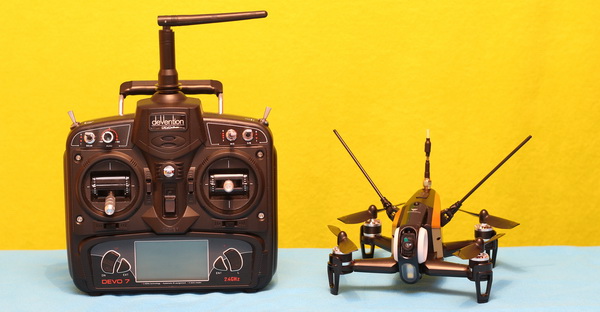
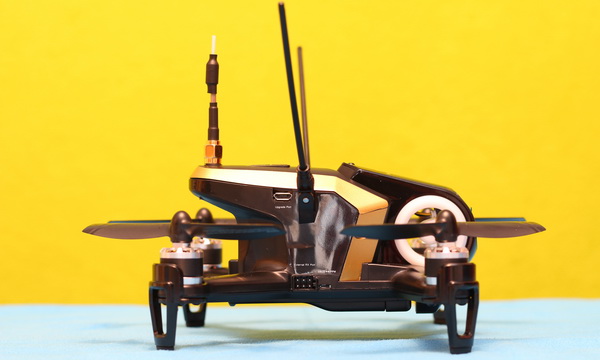
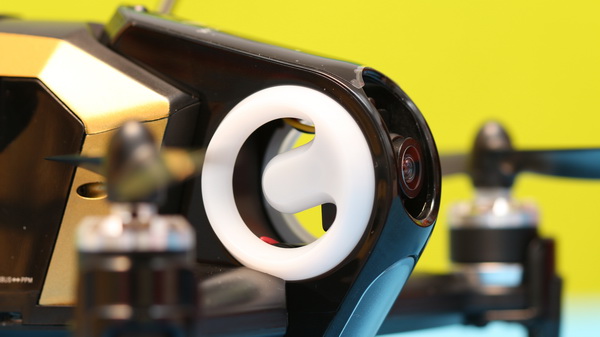
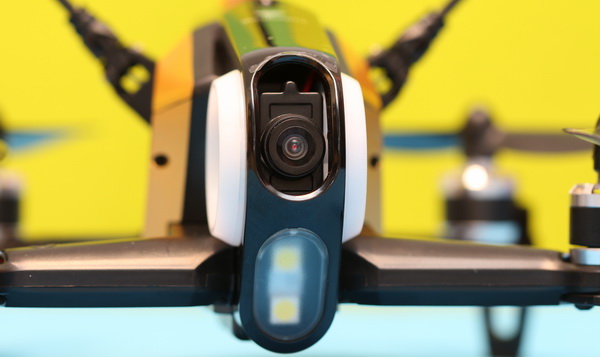
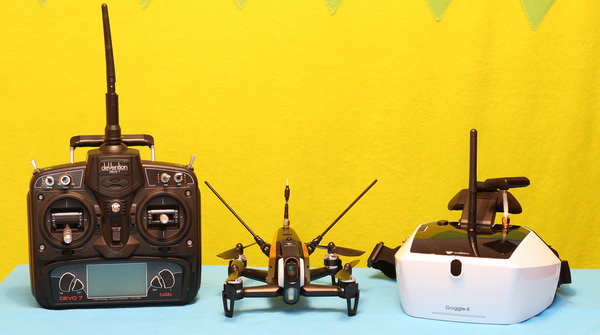
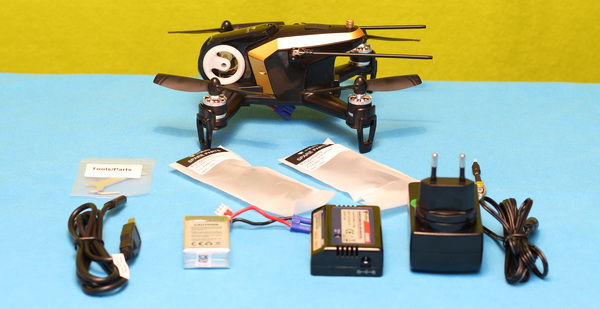
Visitor Rating: 5 Stars
Visitor Rating: 5 Stars
Mi rodeo 150 will not bind with devo 7 because i reset on devo 7, what must i do bind it
thanks for help in advance
In case of devo7 binding is made automatically when is powered ON. If not works is smoothing wrong with the Rode 150’s radio or with the TX.
Check the cables between the FC and the RX
Good luck!
Visitor Rating: 4 Stars
Haha I can’t believe this is advertised as an indoor drone. The power and punch of the Walkera Rodeo 150 drone is way too strong, unless you live in a mansion. :)
Yes, it is suitable only for large spaces.
Visitor Rating: 5 Stars
Visitor Rating: 3 Stars